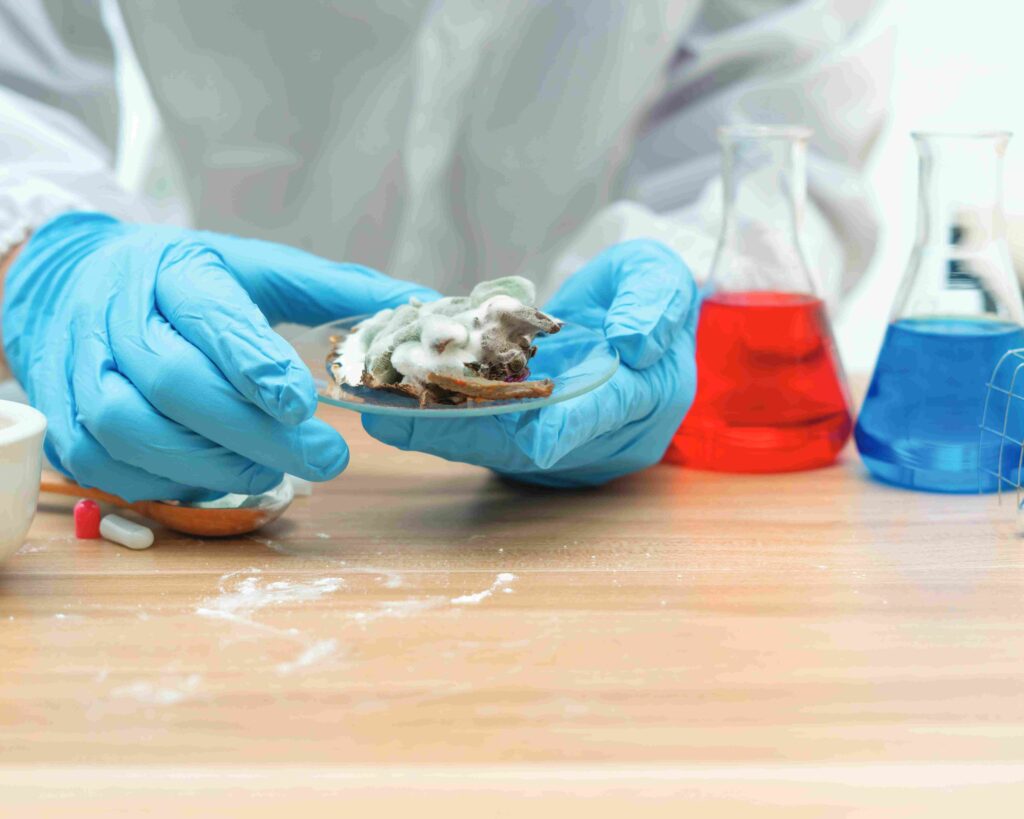
Analytical testing labs and food manufacturing facilities must focus on managing contaminants, humidity, and temperature to ensure a safe working environment and preserve product integrity. C R Chandra Shekar, Vice-President (Marketing Strategy) at Vsix Analytical Labs Pvt. Ltd, shares expert insights on effective strategies to combat airborne pollutants and enhance IAQ
Analytical testing labs need to adhere to rigorous standards in IAQ to maintain the required environment demanded for their functioning. Controlling humidity indoors between 40-50% using dehumidifiers and air-conditioning, reducing moisture build-up through proper ventilation, controlling airborne contaminants, removing organic debris by regular cleaning of HVAC systems, and using mould-resistant paint and furnishings are notable suggestions.
Outdoor air can carry between 200 to 1,500 bacteria per cubic metre and without proper filtration, HVAC systems can circulate millions of bacteria hourly, potentially contaminating food products.”
– C R Chandra Shekar
Established in 2013 and located in Bengaluru, the NABL-accredited company offers testing services across sectors (air, water, wastewater, agriculture, soil, environment, cosmetics, pharma). Air quality management in food manufacturing is a focus, with an emphasis on the risks of poor IAQ and strategies for improvement.
Referring to organisms and particulate matter contamination, he states, “outdoor air can carry between 200 to 1,500 bacteria per cubic metre and without proper filtration, HVAC systems can circulate millions of bacteria hourly, potentially contaminating food products.
“Activities such as cutting and boning can generate particulates, harbouring microbes and increasing the spread of viruses and pathogens within the facility. Improper humidity and temperature levels promote microbial growth, affecting product quality and employee comfort. Hence, increasing air changes dilutes these contaminants, enhancing overall air quality.”
High humidity and organic matter create ideal conditions for the proliferation of biological contaminants such as mould, bacteria, and dust mites.
Shekar points out that mould thrives in humidity levels above 60% and on organic surfaces like wood, drywall, and carpets. Workers can suffer respiratory issues after exposure to mould, aggravating asthma and allergies. Black mould (Stachybotrys chartarum) due to its ability to produce mycotoxins is harmful to humans.
Damp areas increase the growth of bacteria, such as in HVAC systems, humidifiers, and water-damaged surfaces. Further, bacteria such as Legionella pneumophila cause severe infections when inhaled via aerosols. Humidity above 50% allows dust mites to flourish. These microscopic pests feed on organic debris like skin flakes in mattresses, carpets and upholstery. Faecal matter and shed body parts are potent allergens, leading to asthma and allergic rhinitis.
“Managing airborne contaminants from cleaning and sanitising agents in processing environments requires a risk-based approach to controlling chemical exposure.” Shekar recommends the use of low-emission cleaning agents and names hydrogen peroxide, peracetic acid, quaternary ammonium compounds, and enzyme-based cleaners instead of bleach or ammonia.

When it comes to disinfectants, fragrance-free or EPA Safer Choice-certified disinfectants are better at minimising airborne irritants. Overuse can be avoided by adopting automated dilution methods, besides choosing foam or gel-based formulations over sprays to limit aerosolisation. Negative air pressure contains chemical vapours in high-risk zones.
The Vsix Labs representative, elaborating on safe cleaning procedures, suggests PPE enforcement, utilisation of CIP (Clean-In-Place) or fogging systems to limit worker exposure. In cases where VOC generation is excessive, equipment like respirators, gloves, and safety goggles become necessary when handling concentrated chemicals.
Cleaning operations should be done during off-duty hours. Compliance and Risk Assessment are key factors. “Follow OSHA PELs (Permissible Exposure Limits) and NIOSH RELs (Recommended Exposure Limits) for chemical safety.” Compliance with ISO 45001 (Occupational Health & Safety) for managing chemical hazards in the workplace and regular risk assessments are necessary to evaluate chemical exposure risks. The impact of inferior IAQ can lead to health effects and reduced overall productivity.
The long-term aftereffects from prolonged exposure to pollutants like VOCs, mould, or particulate matter are respiratory diseases, cardiovascular issues, and weakened immune function. High levels of CO₂ and poor ventilation reduce concentration, decision-making abilities, problem-solving skills, besides increased absenteeism.
Shekar recommends employee awareness and education about pollutants impacting health from exposure, via posters or digital screens in common areas. Employees should be trained in spotting low air quality and encouraged to suggest solutions after surveys to assemble feedback. “Installing real-time monitoring systems and sharing information with employees, and periodic health screenings to assess symptoms among employees is advisable.”
Shekar recommends the usage of high-efficiency air filters, such as ePM1 to capture fine particles and microorganisms. “Employing ePM1 60% filters in a two-stage filtration system or ePM1 80% filters in a single-stage system significantly reduces airborne contaminants.”
Routine air sampling to monitor levels of air particles and chemical contaminants to accumulate data leads to the identification of deviations. “Increasing the number of air changes per hour to dilute airborne contaminants, HVAC systems can be supplemented with mobile HEPA air cleaners for desired air quality levels. Air zones created within the facility by using air cleaners and fabric ducts can help in establishing positive downflow areas above workstations.”







